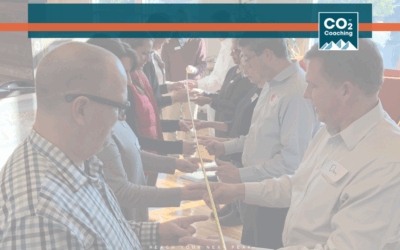In many organizations, the most common phrase you’ll hear is some version of “Is it okay if I…?”
It sounds harmless — even polite — yet it signals something deeper: a culture where initiative must be approved rather than assumed. When every decision requires validation, leaders become bottlenecks, and teams learn that safety lies in compliance, not creativity. What begins as a desire for alignment quietly turns into a system that slows learning, stifles ownership, and drains performance. You begin to foster a permission-seeking culture.
Why Permission-Seeking Cultures Stall Performance
A permission-seeking culture is not a symptom of weak talent — it’s a reflection of how power, trust, and clarity are structured. When employees must ask before they act, accountability migrates upward. Leaders unintentionally become the source of both authority and anxiety, while teams grow dependent and risk-averse.
The cost is measurable: slower decisions, disengaged employees, and missed opportunities for innovation. Research on organizational behavior consistently shows that teams with limited decision authority underperform those with clear guardrails and distributed accountability. The signal is simple — where permission thrives, performance lags.
How Conscious Leaders Redefine Accountability
Conscious leaders flip this pattern by designing systems that make ownership safe and expected. Instead of equating accountability with blame, they define it as clarity plus commitment. They lead with context, not control — ensuring that everyone understands the “why,” the “what,” and the boundaries for action.
At CO₂ Coaching, we call this the shift from external approval to internal agency. When people trust that they have permission to act — not because it was granted, but because it’s built into the system — accountability stops being delegated and starts being lived.
From False Safety to Real Ownership
True psychological safety doesn’t come from asking for permission; it comes from knowing where you have the freedom to decide, experiment, and learn. Leaders who create that clarity unlock a deeper form of engagement — one where people take initiative, own results, and grow through feedback rather than fear.
Replacing permission with ownership is not an act of control; it’s an act of trust. And trust, when structured well, becomes the engine of both accountability and performance.
Why Teams Fall Into Permission-Seeking Culture Patterns
Even the most capable professionals can develop a habit of asking before acting. Behind every “Is it okay if I…?” lies a blend of psychology, past experience, and organizational design. Understanding these dynamics helps leaders replace fear-based compliance with empowered accountability.
1. Locus of Control: Where Accountability Lives
People with an external locus of control believe their outcomes depend on bosses, rules, or luck. For them, asking permission feels like protection — “I only did what I was told.”
Those with an internal locus of control, by contrast, act as agents of change. They take initiative, own results, and rarely over-escalate.
Leaders can strengthen internal control by creating low-risk decision spaces — moments where employees can act, learn, and recover safely. Celebrating those small, autonomous wins signals that ownership is both valued and expected.
2. Learned Helplessness: When Safety Becomes Stagnation
In many organizations, people stop taking initiative not because they don’t care, but because their past attempts were punished or ignored. Over time, teams conclude, “Why bother?” — a classic case of learned helplessness at work.
Permission-seeking then becomes a defensive reflex to avoid blame. The antidote is to reframe failure as learning. When leaders respond to mistakes with curiosity instead of criticism, they restore the psychological safety needed for experimentation and growth.
3. Psychological Ownership: The Antidote to “Just Following Orders”
When individuals see a project as theirs, accountability becomes personal. This sense of psychological ownership grows when people are trusted with end-to-end outcomes and the authority to make decisions that matter.
Empowerment isn’t about removing structure — it’s about aligning responsibility with decision rights, so people know exactly where they can act without waiting for approval.
In essence: permission-seeking is a symptom of low agency and misplaced fear. The cure is to build small, visible wins; model learning over blame; and design systems that make ownership the natural choice.
The Performance Core: Balancing Psychological Safety and High Standards
Psychological safety is not a soft perk — it’s the foundation of every high-performance culture. It allows people to speak up, take smart risks, and learn from mistakes without fear of punishment. When combined with clear, high standards, teams enter what Harvard researcher Amy Edmondson calls the Learning Zone — where accountability and openness reinforce each other.
In Edmondson’s framework, teams that maintain high psychological safety and high standards consistently outperform those stuck in the other three quadrants — Anxiety, Comfort, or Apathy. During these lower zones, either fear silences initiative or low expectations dull ambition.
Within practice, leaders cultivate safety by modeling vulnerability and curiosity: admitting mistakes, inviting dissenting views, and treating feedback as data, not judgment. This environment builds trust — and trust compounds. Studies show that in high-trust organizations, stress decreases, engagement increases, and initiative rises. The result is not leniency, but ownership — people take responsibility because they feel supported to do so. Psychological safety lets truth surface; high standards channel that truth into action. Together, they create the conditions for bold accountability without the permission tax.
The Neuroscience of Motivation: Autonomy, Mastery, and Purpose
Modern neuroscience confirms what great leaders already sense: the human brain thrives on choice, trust, and meaning. When people experience autonomy, the brain releases dopamine — reinforcing motivation and learning. If they feel trusted, oxytocin strengthens connection and collaboration. Then if they pursue clear goals with purpose, the prefrontal cortex focuses, increasing creativity and problem-solving.
Strip away autonomy, however, and the brain shifts into threat mode. Cognitive capacity narrows, risk-taking declines, and employees disengage. This is why micromanagement drains performance long after the moment passes — it triggers the neurobiology of fear. Empowerment, by contrast, activates reward and growth pathways that sustain high performance.
Bottom line: Autonomy isn’t a perk; it’s a neurological performance lever. Leaders who balance freedom with clarity tap into the brain’s natural drive for excellence.
Case Patterns: What Ownership Cultures Do Differently
Netflix — The Power of Freedom + Responsibility
Netflix’s culture famously centers on the principle of “freedom and responsibility”: replace “ask permission” with “act in the company’s best interest.” Leaders define context and constraints, not rules; decision-making is pushed down as far as possible, trusting employees to apply judgment rather than mechanically follow protocol.
This approach is underpinned by two structural levers:
- Talent density and high standards. Netflix applies what it calls the Keeper Test — managers routinely ask whether they would fight to keep an employee if given the chance. This enforces rigor while freeing high performers to act autonomously.
- Radical transparency and minimal policies. Instead of filing a travel policy, Netflix expects people to “act in Netflix’s best interest.” It inverted traditional control by reducing rules and increasing responsibility — deeply embedding ownership into daily decision-making. (Source behind paywall: HBR)
By decoupling decision rights from approvals and tying responsibility to clear outcomes, Netflix effectively turns ownership into a structural norm — not an occasional permission. But it’s worth noting that even Netflix is rethinking parts of this framework as it scales.
Google’s Project Aristotle — Psychological Safety as the Foundation of Ownership
Google’s ambitious research initiative — Project Aristotle — studied over 180 teams to understand what factors actually drive high-performing teams. Surprisingly, it found that team composition, individual IQ, or skill sets were far less predictive than how teams worked together. The single strongest predictor of success? Psychological safety — the belief that one can speak up, admit mistakes, or ask questions without fear of repercussion.
Some key findings:
- Teams with high psychological safety outperformed others even when composed with lower-performing individuals.
- Norms like equal conversational turn-taking and social sensitivity (i.e. listening cues) appeared consistently in top teams — safe space + balanced voice correlated with outcome.
For organizations pursuing ownership culture, the lesson is clear: you can’t ask people to own outcomes if they don’t feel safe doing so. Psychological safety is the precondition that lets conflicts surface, assumptions be challenged, and true accountability be internalized.
In sum: Exemplars of ownership culture remove approval bottlenecks, codify decision rights, and anchor trust in systems, not bureaucracy. Netflix shows how autonomy + responsibility can scale when paired with rigor. Google’s Project Aristotle shows that without safety, autonomy becomes chaos — people won’t act boldly if they fear being wrong.
Five Leadership Practices to Replace Permission-Seeking Culture with Accountability
1. Lead with Context, Not Control
Great leaders empower judgment by providing context — not micromanaging decisions. Explain the why, the what, and the guardrails; then let your team determine the how. This is the essence of stewardship delegation: leaders set goals and boundaries, while teams own execution.
A simple phrase can transform culture: “You don’t need my approval for this — use your judgment and keep me informed.” Once said, it must be honored. Nothing erodes accountability faster than invisible veto power.
When leaders lead with context, decision quality rises and approval bottlenecks disappear.
2. Align Responsibility with Authority
Accountability without authority is a recipe for frustration. If someone is held responsible for a result, they must also have the decision rights to achieve it.
Use frameworks like RACI (Responsible, Accountable, Consulted, Informed) to clarify who owns what — and where approval genuinely adds value. Redesign workflows so decisions sit with the person closest to the work, not the person farthest from the impact.
Ownership takes root when authority and accountability finally match.
3. Make Psychological Safety Visible
Psychological safety isn’t invisible — it’s modeled in every meeting and reaction. Begin by sharing your own learning moments, reward dissent that sharpens the plan, and host blameless post-mortems that separate intent from outcome.
When leaders respond to mistakes with curiosity instead of criticism, they accelerate learning. Reference frameworks like Amy Edmondson’s Learning Zone model to normalize healthy tension: high safety and high standards.
Safety isn’t softness — it’s the speed at which truth travels through the organization.
4. Build a Continuous Feedback Flywheel
Replace one-way updates with two-way learning loops. In short weekly check-ins, ask:
- What commitments were made?
- What progress has been achieved?
- Where are we stuck?
- What support is needed?
Coach teams to reframe “Should I do X?” into “I intend to do X because… — am I missing anything?” Leaders evolve from permission-givers to thinking partners.
Frequent, two-way feedback reduces escalation, sharpens judgment, and builds trust.
5. Celebrate Psychological Ownership
Recognition reinforces culture. Spotlight examples where individuals or teams took initiative, acted decisively, learned openly, and adjusted quickly. Acknowledge how they worked — the clarity, collaboration, and courage — not just what they delivered.
Adopt a visible mantra: “We either win or we learn.” When ownership is recognized, it becomes contagious.
Celebrating initiative signals that autonomy and accountability are the norm, not the exception.
The Systems View: Why Permission-Seeking Cultures Persist
Permission-seeking culture isn’t a people problem — it’s a systems problem.
When strategy is unclear, priorities shift weekly, or decision rights are invisible, people default to asking for approval. This “approval theater” isn’t irrational; it’s a logical response to confusion.
Leaders can’t train accountability into a broken system — they have to redesign the system itself. That means making the organization legible:
- Clarify strategy so everyone understands what matters most.
- Define roles and decision interfaces so authority matches responsibility.
- Establish cadence and feedback loops that keep learning continuous.
At CO₂ Coaching, we help leaders integrate these system-level shifts through executive, team, and strategy coaching — aligning mindsets and mechanics so that accountability becomes the natural way of operating.
Bottom line: You don’t “teach” accountability. You architect it — by making ownership the easiest, safest path in the system.
Implementation Checklist: Your First 90 Days
A 90-day transformation roadmap to move from permission-seeking to ownership-driven culture:
- Name the Shift.
Publicly declare the transition: “We’re moving from permission-seeking to ownership.” Use the Learning Zone model to explain how psychological safety and high standards coexist. - Map Key Decisions.
Identify your ten most frequent recurring decisions. For each, push authority as low as responsibly possible and document clear guardrails. - Run an Authority Audit.
Review your RACI for three critical initiatives. Fix any mismatches between responsibility and decision rights. - Establish a Feedback Cadence.
Launch weekly 15-minute commitment check-ins and monthly blameless retrospectives to normalize rapid learning and course correction. - Model Leader Behaviors.
Leaders go first: share learning moments, ask more questions than they answer, and publicly back good-faith decisions — even when outcomes vary.
When systems shift and leaders model new norms, culture changes faster than any policy memo.
Conclusion: The Climb to Ownership
Permission-seeking may feel safe, but it quietly taxes innovation, speed, and engagement.
Accountable cultures thrive because they replace fear with clarity, approvals with trust, and compliance with purpose. When leaders reframe their beliefs about control, failure, and trust, they unleash a higher form of performance — one rooted in shared ownership and psychological safety.
That’s the climb to your next peak.
Work with CO₂ Coaching
If you’re ready to transform approval loops into ownership loops, CO₂ Coaching can help.
Our executive and team coaching integrates systems thinking, leadership development, and organizational design to create environments where accountability flourishes naturally.
Let’s map your 90-day shift and start climbing.
[→ Explore Leadership Coaching]
[→ Start a Culture Transformation Conversation]
FAQs
Isn’t “no approvals” risky?
Unbounded freedom is risky. The solution is context + guardrails + trust. Push decisions down, but define clear constraints, metrics, and check-ins. (See Netflix and Google case studies above.)
How do we keep standards high without creating fear?
Set explicit outcomes, make truth safe, and inspect the work — not the person. High safety plus high standards equals Learning Zone performance.
What if a leader prefers being the approver?
That’s both a throughput and talent problem. Approvers become bottlenecks, and top performers leave. Redefine the leader’s role as coach and context provider, not gatekeeper.
How fast can we see results?
Within one quarter, most teams feel momentum when they realign decision rights, implement consistent feedback cadences, and leaders visibly model learning.



